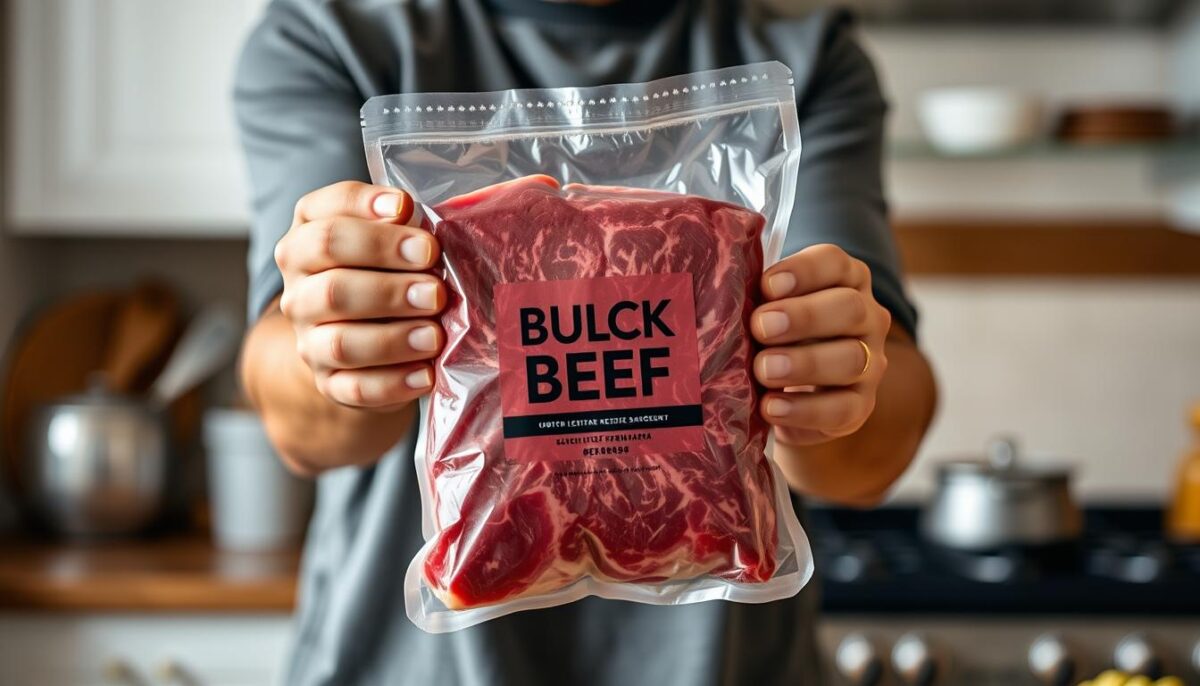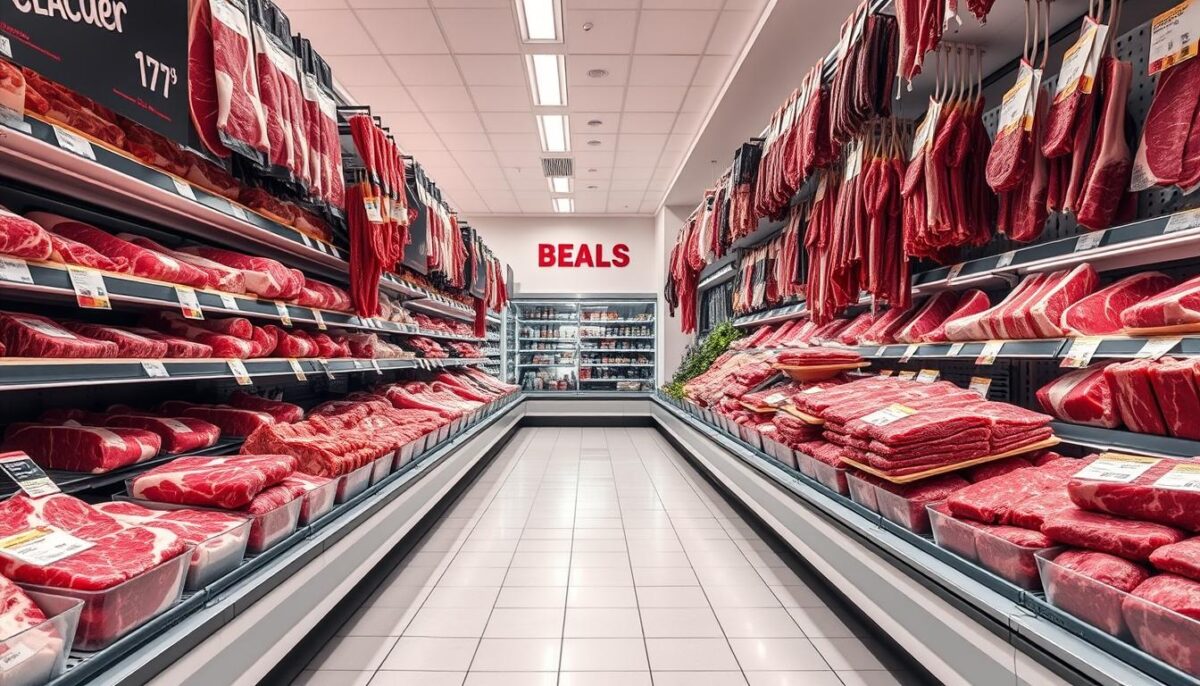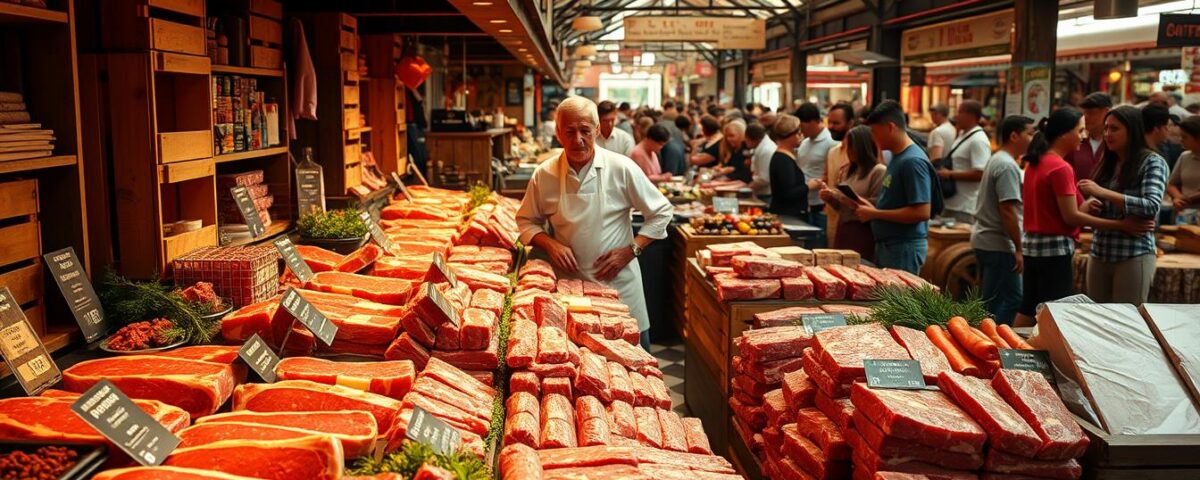
Bronx Produce Market Hacks That Save Restaurants Cash
August 19, 2025Why Tracking NY Terminal Market Prices Daily Boosts Profit
August 20, 2025As I stood in the grocery store, staring at the skyrocketing prices of beef, I couldn’t help but feel a sense of frustration. How could something as essential as a good steak become so unaffordable? The reality is that beef prices have reached record highs, with the average retail price hovering around $8.27 per pound over the past year.
The current market is characterized by high demand and uncertainty, driving prices up by over 8.5% compared to last year. Despite the rising costs, consumers continue to crave quality meat, making it challenging for budget-conscious shoppers to navigate the market. So, how can you enjoy your favorite cuts without breaking the bank?
Key Takeaways
- Understand the factors driving beef prices today
- Discover practical strategies to reduce your grocery bills
- Learn how to make informed purchasing decisions
- Explore ways to enjoy quality meat without overspending
- Develop long-term habits to save on meat costs
The Current State of Meat Prices in 2025
Meat prices in 2025 are under the spotlight, with several key factors contributing to their rise. As a consumer, understanding these factors can help you make informed decisions about your meat purchases.
Rising Costs: Why Beef Prices Continue to Soar
Beef prices have reached new heights due to a combination of factors, including drought, high grain prices, inflation, and rising interest rates. These conditions have made cattle farming a costly endeavor, leading many U.S. cattle farmers to reduce their herd sizes or exit the business altogether. As a result, the U.S. cattle inventory is at its lowest since 1951, creating a supply shortage that directly impacts beef prices across all cuts and grades.
Key Factors Affecting Meat Costs This Year
Several factors are influencing meat costs in 2025. Tariffs on imported beef from countries like Brazil and Australia have added to the price pressure, with a new 10% tariff being passed on to consumers. The wholesale beef market shows significant price increases across all primals, with chuck prices up 14.8% and round primal prices up 22.3% year over year. For more information on wholesale meat suppliers, you can visit https://delivisor.com/blog/wholesale-meat-suppliers/.
The current market dynamics are characterized by strong consumer demand and tightening supplies, leading to higher prices. The average ratio of all-fresh beef to broiler retail prices is at 3.31, and beef to pork prices is at 1.65 over the past twelve months.
| Category | Price Change | Year-over-Year Change |
|---|---|---|
| Chuck Prices | Up 14.8% | Significant increase |
| Round Primal Prices | Up 22.3% | Strong growth |
| Beef to Broiler Prices Ratio | 3.31 | Higher relative to broiler prices |
As the meat market continues to evolve, understanding these factors can help you navigate the challenges and make the most of your meat purchases.
How to Cut Meat Costs in 2025 Without Sacrificing Quality
Cutting meat costs in 2025 doesn’t have to mean sacrificing quality. With the right strategies, you can enjoy high-quality meat while staying within your budget. In this section, we’ll explore practical ways to reduce your meat expenses without compromising on taste or quality.
Buy in Bulk: Consider Quarter, Half, or Whole Beef
One effective way to save on meat costs is by buying in bulk. Purchasing a quarter, half, or whole beef can significantly reduce your expenses. When you buy in bulk, you can have your meat processed to your specifications, choosing the steak thickness, roast weight, and package size that suits your needs.
For instance, you can have your beef made into various products like summer sausage, brats, jerky, corned beef, and burger patties. Plus, you’ll receive bonus items like bones, fat, and organ meats completely free, which can be used to make stock, render fat, and enjoy nutrient-dense organ meats.

Choose More Affordable Cuts Without Compromising Taste
Opting for more affordable cuts of beef can be a cost-effective strategy without sacrificing flavor. Cuts like chuck roast, sirloin tip, and flank steak offer excellent value in 2025’s market. These cuts may not be as premium as some other options, but they can deliver great taste and texture when prepared correctly.
For example, a chuck roast can be slow-cooked to tender perfection, while a sirloin tip can be grilled or sautéed for a delicious meal. By exploring these affordable cuts, you can enjoy a variety of beef dishes without breaking the bank.
Shop Strategically Based on Seasonal Price Trends
Understanding seasonal price trends is crucial to saving on meat costs. Certain cuts of beef tend to drop in price during specific times of the year. By stocking up during these periods, you can take advantage of lower prices and enjoy your favorite beef products throughout the year.
For instance, ground beef prices may be lower during certain months, making it an ideal time to stock up on burgers and other ground beef products. By being aware of these trends, you can plan your purchases accordingly and save on your meat expenses.
Advanced Money-Saving Techniques for Meat Shoppers
Understanding the intricacies of the beef market is crucial for making informed purchasing decisions that save money. As we explore advanced strategies for cutting meat costs in 2025, it’s essential to consider multiple factors that influence prices.
Explore Alternative Protein Sources
Diversifying your protein sources can significantly reduce your overall meat expenses while maintaining nutritional quality. Consider incorporating options like legumes, eggs, dairy, and plant-based proteins into your diet. These alternatives can supplement your meat consumption, providing a more balanced and cost-effective approach to protein intake.
- Legumes: Rich in protein and fiber, legumes like lentils and chickpeas are affordable and versatile.
- Eggs: An excellent source of protein, eggs are relatively inexpensive and can be used in various dishes.
- Dairy: Products like Greek yogurt and cottage cheese offer high protein content at a lower cost than many meat products.
- Plant-based proteins: Options like tofu and tempeh can be cost-effective alternatives to meat.
Maximize Freezer Storage and Preservation Methods
Proper freezer storage techniques can extend the life of your meat purchases and allow you to take advantage of sales. To maintain quality, consider the following strategies:
- Optimal packaging: Use airtight containers or freezer bags to prevent freezer burn.
- Organization systems: Label and date your frozen meat to ensure first-in, first-out usage.
- Thawing techniques: Plan ahead by thawing frozen meat in the refrigerator or cold water.

Take Advantage of Sales, Discounts, and Loyalty Programs
Strategic use of loyalty programs, digital coupons, and store promotions can yield significant savings on meat purchases. To maximize benefits:
- Sign up for loyalty programs: Many grocery stores offer exclusive discounts to loyalty program members.
- Use digital coupons: Combine digital coupons with sales to stack discounts.
- Monitor store promotions: Keep an eye on weekly ads and in-store promotions for meat sales.
By implementing these advanced money-saving techniques, meat shoppers can navigate the challenges of the current beef market while reducing their expenses.
Conclusion: Balancing Quality and Budget in Your Meat Purchases
The challenge of balancing quality and budget in meat purchases is particularly pressing in 2025, given the current state of the beef market. With cattle inventory at historic lows and consumer demand remaining strong, prices are likely to stay elevated throughout the year.
To manage meat costs effectively, it’s essential to combine multiple strategies: buying in bulk when possible, choosing more affordable cuts, shopping seasonally, exploring diverse protein sources, and maximizing storage capabilities. Understanding that the cattle production cycle takes time helps set realistic expectations; even if herd expansion begins today, it will take 2+ years before we see significant price relief.
By implementing these strategies and staying informed about market conditions, you can continue to enjoy high-quality meat while keeping your food budget under control. The presence of tariffs and continued tight supplies in the beef market make flexible shopping strategies more important than ever.
FAQ
Why are beef prices expected to remain high in 2025?
Beef prices are expected to stay high due to factors such as tightening supplies, increased demand, and the impact of tariffs on imports. The livestock industry is also experiencing a period of herd expansion, which can lead to higher prices.
How can I save money on ground beef purchases?
To save on ground beef, consider buying in bulk, choosing more affordable lean beef options, and shopping during sales or discounts. You can also explore alternative protein sources or look for loyalty programs offered by your local grocery stores.
What are some affordable cuts of beef that don’t compromise on taste?
Some affordable cuts of beef that are rich in flavor include chuck, round, and brisket. These cuts can be just as delicious as more expensive options when cooked properly. I recommend exploring different cooking methods to bring out the best flavor.
How does the cattle inventory affect beef prices?
The cattle inventory plays a significant role in determining beef prices. When the calf crop is smaller, it can lead to a decrease in the overall cattle inventory, resulting in higher prices. Conversely, a larger calf crop can lead to increased supplies and potentially lower prices.
What role do tariffs play in beef prices?
Tariffs imposed on beef imports can contribute to higher prices. When tariffs are in place, it becomes more expensive for suppliers to import beef, and these costs are often passed on to consumers. As a result, U.S. beef prices can be affected by global trade policies.
How can I make the most of my freezer storage to save on beef?
To maximize your freezer storage, consider buying beef in bulk and freezing it for later use. You can also use proper preservation methods, such as vacuum-sealing, to keep your beef fresh for a longer period. This way, you can take advantage of sales and discounts without worrying about the beef going bad.



